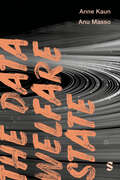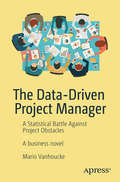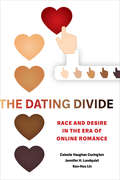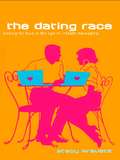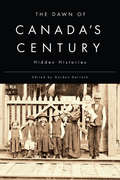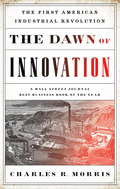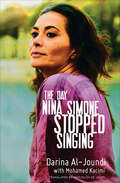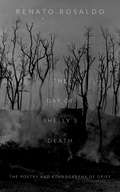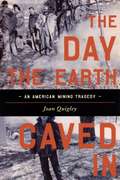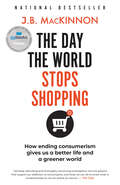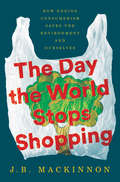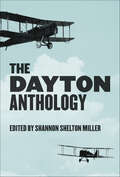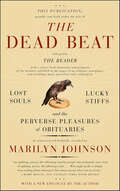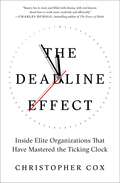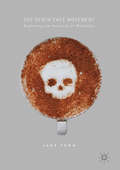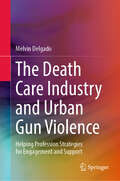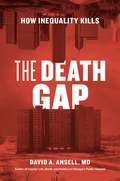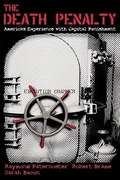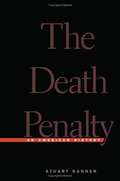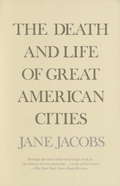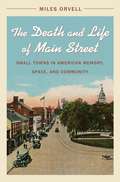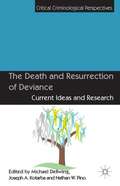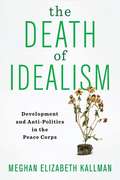- Table View
- List View
The Data Welfare State (Data Justice)
by Anne Kaun Anu MassoAutomation is a reality of the modern world, yet it is fraught with contradictions. On the surface it appears sleek, efficient and seamlessly integrated, and yet it is also changing, uncertain, troubling. This book delves into that frictional interface, exploring themes like welfare automation experiments, citizen resistance, and the invisible technology woven into our lives. In this book you will encounter: - An international perspective, with examples drawn from Germany, Sweden and Estonia - Diverse viewpoints, from welfare professionals to citizens who rely on welfare services - A bold vision and urgent call to action, advocating for the reorganization of the data welfare state Fascinating and timely, this book is essential reading for anyone interested in data welfare. Published in collaboration with the Data Justice Lab as part of the Data Justice Series (Editors: Lina Dencik, Arne Hintz, Joanna Redden and Emiliano Treré)
The Data Welfare State (Data Justice)
by Anne Kaun Anu MassoAutomation is a reality of the modern world, yet it is fraught with contradictions. On the surface it appears sleek, efficient and seamlessly integrated, and yet it is also changing, uncertain, troubling. This book delves into that frictional interface, exploring themes like welfare automation experiments, citizen resistance, and the invisible technology woven into our lives. In this book you will encounter: - An international perspective, with examples drawn from Germany, Sweden and Estonia - Diverse viewpoints, from welfare professionals to citizens who rely on welfare services - A bold vision and urgent call to action, advocating for the reorganization of the data welfare state Fascinating and timely, this book is essential reading for anyone interested in data welfare. Published in collaboration with the Data Justice Lab as part of the Data Justice Series (Editors: Lina Dencik, Arne Hintz, Joanna Redden and Emiliano Treré)
The Data-Driven Project Manager: A Statistical Battle Against Project Obstacles
by Mario VanhouckeDiscover solutions to common obstacles faced by project managers. Written as a business novel, the book is highly interactive, allowing readers to participate and consider options at each stage of a project. The book is based on years of experience, both through the author's research projects as well as his teaching lectures at business schools.The book tells the story of Emily Reed and her colleagues who are in charge of the management of a new tennis stadium project. The CEO of the company, Jacob Mitchell, is planning to install a new data-driven project management methodology as a decision support tool for all upcoming projects. He challenges Emily and her team to start a journey in exploring project data to fight against unexpected project obstacles.Data-driven project management is known in the academic literature as “dynamic scheduling” or “integrated project management and control.” It is a project management methodology to plan, monitor, and control projects in progress in order to deliver them on time and within budget to the client. Its main focus is on the integration of three crucial aspects, as follows:Baseline Scheduling: Plan the project activities to create a project timetable with time and budget restrictions. Determine start and finish times of each project activity within the activity network and resource constraints. Know the expected timing of the work to be done as well as an expected impact on the project’s time and budget objectives. Schedule Risk Analysis: Analyze the risk of the baseline schedule and its impact on the project’s time and budget. Use Monte Carlo simulations to assess the risk of the baseline schedule and to forecast the impact of time and budget deviations on the project objectives. Project Control: Measure and analyze the project’s performance data and take actions to bring the project on track. Monitor deviations from the expected project progress and control performance in order to facilitate the decision-making process in case corrective actions are needed to bring projects back on track. Both traditional Earned Value Management (EVM) and the novel Earned Schedule (ES) methods are used.What You'll LearnImplement a data-driven project management methodology (also known as "dynamic scheduling") which allows project managers to plan, monitor, and control projects while delivering them on time and within budgetStudy different project management tools and techniques, such as PERT/CPM, schedule risk analysis (SRA), resource buffering, and earned value management (EVM)Understand the three aspects of dynamic scheduling: baseline scheduling, schedule risk analysis, and project controlWho This Book Is ForProject managers looking to learn data-driven project management (or "dynamic scheduling") via a novel, demonstrating real-time simulations of how project managers can solve common project obstacles
The Dating Divide: Race and Desire in the Era of Online Romance
by Jennifer Hickes Lundquist Celeste Vaughan Curington Ken-Hou LinThe data behind a distinct form of racism in online datingThe Dating Divide is the first comprehensive look at "digital-sexual racism," a distinct form of racism that is mediated and amplified through the impersonal and anonymous context of online dating. Drawing on large-scale behavioral data from a mainstream dating website, extensive archival research, and more than seventy-five in-depth interviews with daters of diverse racial backgrounds and sexual identities, Curington, Lundquist, and Lin illustrate how the seemingly open space of the internet interacts with the loss of social inhibition in cyberspace contexts, fostering openly expressed forms of sexual racism that are rarely exposed in face-to-face encounters. The Dating Divide is a fascinating look at how a contemporary conflux of individualization, consumerism, and the proliferation of digital technologies has given rise to a unique form of gendered racism in the era of swiping right—or left.The internet is often heralded as an equalizer, a seemingly level playing field, but the digital world also acts as an extension of and platform for the insidious prejudices and divisive impulses that affect social politics in the "real" world. Shedding light on how every click, swipe, or message can be linked to the history of racism and courtship in the United States, this compelling study uses data to show the racial biases at play in digital dating spaces.
The Dating Race
by Stacy KravetzA report from the front lines of the dating world-Stacy Kravetz goes undercover in search of the soul of love. With the abundance of dating strategies, technologies, and services available on the market today, is it any easier to find love? In this hilarious and heart-warming book, Stacy Kravetz samples the merchandise and discovers that-impressive technological advances aside-the search for true love is never simple. From "lock and key" parties, where men try their keys in women's locks until-well, you get the picture-to "date doctors," who, for a fee, will evaluate your techniques and tell you where your sales pitch is going wrong, Kravetz takes readers on a fascinating tour of the world of twenty-first-century romance. Drawing on interviews with a host of men and women currently grappling with finding a mate, as well as her own experiences out in the playing field, Kravetz explores what our dating lives reveal about us and our culture. And all the while, she vividly captures how-though the landscape of love is forever changing -the human heart remains a wildly mysterious thing.
The Dating Race
by Stacy KravetzWith the abundance of dating strategies, technologies, and services available on the market today, is it any easier to find love? In this hilarious and heart-warming book, Stacy Kravetz samples the merchandise and discovers that--impressive technological advances aside--the search for true love is never simple. From "lock and key" parties, where men try their keys in women's locks until--well, you get the picture--to "date doctors," who, for a fee, will evaluate your techniques and tell you where your sales pitch is going wrong, Kravetz takes readers on a fascinating tour of the world of twenty-first-century romance. Drawing on interviews with a host of men and women currently grappling with finding a mate, as well as her own experiences out in the playing field, Kravetz explores what our dating lives reveal about us and our culture. And all the while, she vividly captures how--though the landscape of love is forever changing--the human heart remains a wildly mysterious thing.
The Dawn of Canada's Century: Hidden Histories
by Gordon DarrochSir Wilfrid Laurier famously claimed that the twentieth century would be Canada's century and, indeed, its opening decade witnessed remarkable territorial, demographic, and social transformations. Yet the lives of those who lived and laboured to fashion these changes remain largely hidden from historical view. The Dawn of Canada's Century presents close and systematic interpretations of everyday lives based on the first national sample of the 1911 census. Written by many of Canada's leading historical researchers, The Dawn of Canada's Century demonstrates the wide-ranging and revealing social histories made possible by the new Canadian Century Research Infrastructure, an innovative database of national samples of decennial census microdata, from 1911 through 1951. This revealing collection sheds new light on topics including identity and language, the socio-demography of aboriginal populations, national labour market dynamics, earnings distributions, social mobility, gender and immigration experiences, and the technologies of census taking. Situating early twentieth-century Canada within international historical population studies, these essays provide new ways to understand individuals' lives and connect them to larger structural changes. Contributors include Peter Baskerville (Alberta), Claude Bellevance (Université du Quebéc à Trois Rivière), Sean T. Cadigan (Memorial), Gordon Darroch (York), Lisa Dillon (UdeM), Chad Gaffield (SSHRC), Danielle Gauvreau (Concordia), Gustave Goldmann (Ottawa), Adam J. Green (Ottawa), Kris Inwood (Guelph), Charles Jones (Toronto), Richard Marcoux (Laval), Mary MacKinnon (McGill), Chris Minns (London School of Economics), Byron Moldofsky (Toronto), France Normand (Université du Quebéc à Trois Rivière), Stella Park (Toronto), Terry Quinlan (Newfoundland and Labrador Statistics Agency), Laurent Richard (Laval), Katharine Rollwagen (Ottawa), Evelyn Ruppert (Goldsmiths, University of London), Eric W. Sager (Victoria), Marc St-Hilaire (Laval), and Patricia Thornton (Concordia).
The Dawn of Innovation: The First American Industrial Revolution
by Charles R. MorrisIn the thirty years after the Civil War, the United States blew by Great Britain to become the greatest economic power in world history. That is a well-known period in history, when titans like Andrew Carnegie, John D. Rockefeller, and J. P. Morgan walked the earth. But as Charles R. Morris shows us, the platform for that spectacular growth spurt was built in the first half of the century. By the 1820s, America was already the world's most productive manufacturer, and the most intensely commercialized society in history. The War of 1812 jumpstarted the great New England cotton mills, the iron centers in Connecticut and Pennsylvania, and the forges around the Great Lakes. In the decade after the War, the Midwest was opened by entrepreneurs. In this beautifully illustrated book, Morris paints a vivid panorama of a new nation buzzing with the work of creation. He also points out the parallels and differences in the nineteenth century American/British standoff and that between China and America today.
The Day Nina Simone Stopped Singing
by Mohamed Kacimi Darina Al-JoundiThe Homeland actress&’s &“recollections of her unconventional youth in war-torn Beirut are heartbreaking yet humorous . . . in this unique&” memoir (Publishers Weekly). Raised in 1970s Lebanon on Charles Baudelaire, A Clockwork Orange, and fine Bordeaux, Darina Al-Joundi was encouraged by her unconventional father to defy all taboos. She spent her adolescence defying death in Beirut nightclubs as bombs fell across the city. The more oppressive the country became, the more drugs and anonymous sex she had, fueling the resentment directed at her daily by the same men who would spend the night with her. As the war dies down, she begins to incur the consequences of her lifestyle. On his deathbed, her father&’s last wish is for his favorite song, &“Sinnerman&” by Nina Simone, to be played at his funeral instead of the traditional suras of the Koran. When she does just that, the final act of defiance elicits a catastrophic response from her surviving family members. In this dramatic true story, Darina Al-Joundi is defiantly passionate about living her life as a liberated woman, even if it means leaving everyone and everything behind in this &“beautifully taut and relentlessly unemotional&” memoir (Kirkus).
The Day of Shelly’s Death: The Poetry and Ethnography of Grief
by Renato RosaldoThis deeply moving collection of poetry by Renato Rosaldo focuses on the shock of his wife Michelle (Shelly) Rosaldo's sudden death on October 11, 1981. Just the day before, Shelly and her family had arrived in the northern Philippine village of Mungayang, where she and her husband Renato, both accomplished anthropologists, planned to conduct fieldwork. On October 11, Shelly died after losing her footing and falling some sixty feet from a cliff into a swollen river. Renato Rosaldo explored the relationship between bereavement and rage in his canonical essay, "Grief and a Headhunter's Rage," which first appeared in 1984 and is reprinted here. In the poems at the heart of this book, he returns to the trauma of Shelly's death through the medium of free verse, maintaining a tight focus on the events of October 11, 1981. He explores not only his own experience of Shelly's death but also the imagined perspectives of many others whose lives intersected with that tragic event and its immediate aftermath, from Shelly herself to the cliff from which she fell, from the two young boys who lost their mother to the strangers who carried and cared for them, from a tricycle taxi driver, to a soldier, to priests and nuns. Photographs taken years earlier, when Renato and Shelly were conducting research across the river valley from Mungayang, add a stark beauty. In a new essay, "Notes on Poetry and Ethnography," Rosaldo explains how and why he came to write the harrowing yet beautiful poems in The Day of Shelly's Death. More than anything else though, the essay is a manifesto in support of what he calls antropoesía, verse with an ethnographic sensibility. The essay clarifies how this book of rare humanity and insight challenges the limits of ethnography as it is usually practiced.
The Day the Earth Caved In: An American Mining Tragedy
by Joan QuigleyThe Day the Earth Caved In is an unprecedented and riveting account of the nation’s worst mine fire, beginning on Valentine’s Day, 1981, when twelve-year-old Todd Domboski plunged through the earth in his grandmother’s backyard in Centralia, Pennsylvania. In astonishing detail, award-winning journalist Joan Quigley, the granddaughter of Centralia miners, ushers readers into the dramatic world of the underground blaze——from the media circus and back-room deal-making spawned in the wake of Todd’s sudden disappearance, to the inner lives of every day Centralians who fought a government that wouldn’t listen. Drawing on interviews with key participants and exclusive new research, Quigley paints unforgettable portraits of Centralia and its residents, from Tom Larkin, the short-order cook and ex-hippie who rallied the activists, to Helen Womer, a bank teller who galvanized the opposition, denying the fire’s existence even as toxic fumes invaded her home. Here, too, we see the failures of major political and government figures, from Centralia’s congressman, “Dapper” Dan Flood, a former actor who later resigned in the wake of corruption allegations, to James Watt, a former lawyer-lobbyist for the mining industry, who became President Reagan’s controversial interior secretary.Like Jonathan Harr’s A Civil Action, The Day the Earth Caved In is a seminal investigation of individual rights, corporate privilege, and governmental indifference to the powerless. Exposing facts in prose that reads like fiction, Quigley shows us what happens to a small community when disaster strikes, and what it means to call someplace home.Praise for The Day the Earth Caved In:"Her scene-by-scene narrative reads like fiction but inspires outrage in the muckraking tradition of Lincoln Steffens and Rachel Carson.”—The New York Times "[A]s a piece of explanatory journalism, The Day The Earth Caved In shines."—Washington Post Book World“It is quite a story.”—The Wall Street Journal“First rate research and journalism combing to tell a sad, often infuriating tale.” — Kirkus Reviews (starred) “ Quigley’s riveting account of the nation’s most devastating mine fire will change the way you think about so-called natural disasters, and the emotions we attach to the places we call home. This is an extraordinary book.” — Sean Wilentz, author of The Rise of American Democracy “Quigley’s tale is a real-life epic of brutally indifferent government, greedy corporations and the unlikely heroes who fight for their basic human rights. It's all here; made in America. You'll feel enraged to know the truth of what happened in our mountains and proud of your fellow Americans who took on Goliath." — John Passacantando, Executive Director, Greenpeace USA “If you can imagine a book that combines the gritty dignity of How Green Was My Valley with the muckraking of Silent Spring, then you have some sense of this deeply affecting work.”— Samuel G. Freedman, author of Upon This Rock “Joan Quigley, the granddaughter of coal miners, has combined meticulous reporting and personal passion to bring us this important book — one that illuminates an underground blaze that many corporate and government officials sought to smother and conceal.” — Gay Talese, author of A Writer’s Life
The Day the World Stops Shopping: How Ending Consumerism Saves The Environment And Ourselves
by J.B. MackinnonIn a brilliant work of imaginative non-fiction, prize-winning author J.B. MacKinnon asks what would happen--to our economy, our ecology, our products, our selves--if we stopped consuming so much? Is that alternative world one we might actually want to live in?"We can't stop shopping. And yet we must. This is the consumer dilemma." The planet says we consume too much: in North America, we burn the earth's resources at a rate five times faster than they can regenerate. And despite our efforts to "green" our consumption--by recycling, increasing energy efficiency, or using solar power--we have yet to see a decline in global carbon emissions. The economy says we must always consume more, because, as we've seen in the pandemic, even the slightest drop in spending leads to widespread unemployment, bankruptcy and home foreclosures. Addressing this paradox head-on, J.B. MacKinnon asks, What would really happen if we simply stop shopping? Is there a way to reduce our consumption to earth-saving levels without triggering an economic collapse? At first, this question took him around the world, seeking answers: from America's big-box stores, to the hunter-gatherer cultures of Namibia, to communities in Ecuador that consume at an exactly sustainable rate. Then his thought experiment came shockingly true, as the coronavirus brought shopping to a halt and MacKinnon's ideas were tested in real time. Drawing on experts ranging from economists to climate scientists to corporate CEOs, MacKinnon investigates how living with less would change our planet, our society and ourselves. Along the way, he reveals just how much we stand to gain. Imaginative and inspiring, The Day the World Stops Shopping will empower you to imagine another way.
The Day the World Stops Shopping: How Ending Consumerism Saves the Environment and Ourselves
by J.B. MacKinnonConsuming less is our best strategy for saving the planet—but can we do it? In this thoughtful and surprisingly optimistic book, journalist J. B. MacKinnon investigates how we may achieve a world without shopping.We can’t stop shopping. And yet we must. This is the consumer dilemma. The economy says we must always consume more: even the slightest drop in spending leads to widespread unemployment, bankruptcy, and home foreclosure.The planet says we consume too much: in America, we burn the earth’s resources at a rate five times faster than it can regenerate. And despite efforts to “green” our consumption—by recycling, increasing energy efficiency, or using solar power—we have yet to see a decline in global carbon emissions.Addressing this paradox head-on, acclaimed journalist J. B. MacKinnon asks, What would really happen if we simply stopped shopping? Is there a way to reduce our consumption to earth-saving levels without triggering economic collapse? At first this question took him around the world, seeking answers from America’s big-box stores to the hunter-gatherer cultures of Namibia to communities in Ecuador that consume at an exactly sustainable rate. Then the thought experiment came shockingly true: the coronavirus brought shopping to a halt, and MacKinnon’s ideas were tested in real time.Drawing from experts in fields ranging from climate change to economics, MacKinnon investigates how living with less would change our planet, our society, and ourselves. Along the way, he reveals just how much we stand to gain: An investment in our physical and emotional wellness. The pleasure of caring for our possessions. Closer relationships with our natural world and one another. Imaginative and inspiring, The Day the World Stops Shopping will embolden you to envision another way.
The Dayton Anthology (Belt City Anthologies)
by Shannon Shelton MillerStories, poems, and essays that pay homage to the innovative spark and high-flying spirit that help the Midwest&’s Gem City survive and thrive. A part of Belt&’s City Anthology Series, The Dayton Anthology offers a portrait of a city recovering from the twin 2019 crises of devastating tornadoes and the mass shooting that took the lives of nine residents in the Oregon District. In over fifty essays and poems, contributors reflect on these traumas and the longer-term ills of disinvestment and decay that have plagued Dayton and the Miami Valley for years. But they also draw our attention to the resilience of the people who call Dayton home. This is the city that brought the world the Wright brothers&’ invention of flight, the cash register, and the hydraulic pump. It also gave us the soaring poetry of Paul Laurence Dunbar and the comedy of Dave Chappelle. Edited by Shannon Shelton Miller and with contributions from Dayton Mayor Nan Whaley and former Ohio Governor Bob Taft. A delightful tour of a city that never counts itself out, that captures the true diversity of Dayton&’s residents.
The Dead Beat: Lost Souls, Lucky Stiffs, and the Perverse Pleasures of Obituaries
by Marilyn JohnsonA light-hearted look at the history and practice of “the ultimate human-interest story,” the obituary.“What a wonderful surprise—a charming, lyrical book about the men and women who write obituaries. The Dead Beat is sly, droll, and completely winning.”— David HalberstamWhere can readers celebrate the life of the pharmacist who moonlighted as a spy, the genius behind Sea Monkeys, the school lunch lady who spent her evenings as a ballroom hostess? The obituary page, of course. Enthralled by these fascinating former lives, Marilyn Johnson tumbled into the little known world of the obituary page to find out what made it so compelling. She sought out the best obits in the English language, and chased the people who spent their lives writing about the dead. Surveying Internet chat rooms, surviving a mass gathering of obituarists, and making the pilgrimage to London to savor the most caustic and literate obits of all, she leads us into the cult and culture behind this fascinating segment of our daily news.
The Deadline Effect: How to Work Like It's the Last Minute—Before the Last Minute
by Christopher CoxIn the tradition of Charles Duhigg&’s The Power of Habit, Christopher Cox&’s The Deadline Effect is a wise and counterintuitive book that explores the power of deadlines as uniquely effective tools of motivation and empowerment.Perfectionists and procrastinators alike agree—it&’s natural to dread a deadline. Whether your goal is to complete a masterpiece or just check off an overwhelming to-do list, the ticking clock signals despair. Christopher Cox knows the panic of the looming deadline all too well—as a magazine editor, he has spent years overseeing writers and journalists who couldn&’t meet a deadline to save their lives. After putting in a few too many late nights in the newsroom, he became determined to learn the secret of managing deadlines. He set off to observe nine different organizations as they approached a high-pressure deadline. Along the way, Cox made an ever greater discovery: these experts didn&’t just meet their big deadlines—they became more focused, productive, and creative in the process. In The Deadline Effect, Cox shares the strategies these teams used to guarantee success while staying on schedule: a restaurant opening for the first time, a ski resort covering an entire mountain in snow, a farm growing enough lilies in time for Easter, and more. Cox explains how readers can understand the psychological underpinnings of expectations and time, the dynamics of teams and customers, and techniques for using deadlines to make better, more assured decisions.
The Death Café Movement: Exploring the Horizons of Mortality
by Jack FongThis sociological work examines the phenomenon of the Death Café, a regular gathering of strangers from all walks of life who engage in “death talk” over coffee, tea, and desserts. Using insightful theoretical frameworks, Fong explores the common themes that constitute a “death identity” and reveals how Café attendees are inspired to live in light of death because of death. Fong examines how the participants’ embrace of self-sovereignty and confrontation of mortality revive their awareness of and appreciation for shared humanity. While divisive identity politics continue to foster neo-tribalisms and the construction of myriad “others,” Fong makes visible how those who participate in Death Cafés end up building community while being inspired toward living more fulfilling lives. Through death talk unfettered from systemic control, they end up feeling more agency over their own lived lives as well as being more conscious of the possibility of a good death. According to Fong, participants in this phenomenon offer us a sublime way to confront the facticity of our own demise—by gathering as one.
The Death Care Industry and Urban Gun Violence: Helping Profession Strategies for Engagement and Support
by Melvin DelgadoThis book provides a unique foundation upon which to view how the involvement of the death care sector offers a potential route to take in practice and research in reaching urban communities of color dealing with gun-related deaths. Gun violence in the United States is a salient national problem with virtually no day that goes by without it occurring. Where gun violence occurs, in turn, must be examined to facilitate understanding of how context influences the significance of the shooting. In the case of this book, the context is urban and death care sector (funeral homes, cemeteries, and houses of worship). Understanding how these settings shape public reactions help inform us as to how best to address this social and public health problem in the nation's urban centers and its consequences for communities. The book addresses five interrelated goals that weave together a variety of themes to produce a vision and guidance needed for a new practice arena: (1) ground readers in the latest statistical information on urban gun violence in this country; (2) review existing approaches to preventing and intervening in community gun violence with a focus on cities; (3) uplift the importance of the death care industry in meeting the needs of families and friends of gun victims. Attention is also paid to how funeral homes have expanded their vision of services to aid their community; (4) provide readers with details and insights into how to develop collaborative projects with systems of care through a series of case illustrations; and (5) put forth community practice, education, and research recommendations for how best to prepare future practitioners wishing to work with the death care sector on other related community issues to better serve urban communities. The Death Care Industry and Urban Gun Violence is a must-read for community psychologists, social workers, public health practitioners, community educators, sociologists, community medical providers, criminologists, and urban planners, as well as academics and students in these fields. Policy makers will also find the book of interest.
The Death Gap: How Inequality Kills
by David A. AnsellWe hear plenty about the widening income gap between the rich and the poor in America and about the expanding distance separating the haves and the have-nots. But when detailing the many things that the poor have not, we often overlook the most critical—their health. The poor die sooner. Blacks die sooner. And poor urban blacks die sooner than almost all other Americans. In nearly four decades as a doctor at hospitals serving some of the poorest communities in Chicago, David Ansell has witnessed firsthand the lives behind these devastating statistics. In The Death Gap, he gives a grim survey of these realities, drawn from observations and stories of his patients. While the contrasts and disparities among Chicago’s communities are particularly stark, the death gap is truly a nationwide epidemic—as Ansell shows, there is a thirty-five-year difference in life expectancy between the healthiest and wealthiest and the poorest and sickest American neighborhoods. If you are poor, where you live in America can dictate when you die. It doesn’t need to be this way; such divisions are not inevitable. Ansell calls out the social and cultural arguments that have been raised as ways of explaining or excusing these gaps, and he lays bare the structural violence—the racism, economic exploitation, and discrimination—that is really to blame. Inequality is a disease, Ansell argues, and we need to treat and eradicate it as we would any major illness. To do so, he outlines a vision that will provide the foundation for a healthier nation—for all. Inequality is all around us, and often the distance between high and low life expectancy can be a matter of just a few blocks. But geography need not be destiny, urges Ansell. In The Death Gap he shows us how we can face this national health crisis head-on and take action against the circumstances that rob people of their dignity and their lives.
The Death Penalty: America's Experience with Capital Punishment
by Raymond Paternoster Robert Brame Sarah BaconThe authors present a balanced perspective that focuses on both the arguments for and against capital punishment--one of the most controversial issues in the criminal justice system today.
The Death Penalty: An American History
by Stuart BannerNow, for the first time, we have a comprehensive history of the death penalty in the United States. Stuart Banner tells the story of how, over four centuries, dramatic changes have taken place in the ways capital punishment has been administered and experienced. Banner moves beyond the debates to give us an unprecedented understanding of the many meanings of capital punishment in America.
The Death and Life of Great American Cities (Peregrine Bks.)
by Jane JacobsThirty years after its publication, The Death and Life of Great American Cities was described by The New York Times as "perhaps the most influential single work in the history of town planning....[It] can also be seen in a much larger context. It is first of all a work of literature; the descriptions of street life as a kind of ballet and the bitingly satiric account of traditional planning theory can still be read for pleasure even by those who long ago absorbed and appropriated the book's arguments." Jane Jacobs, an editor and writer on architecture in New York City in the early sixties, argued that urban diversity and vitality were being destroyed by powerful architects and city planners. Rigorous, sane, and delightfully epigrammatic, Jacobs's small masterpiece is a blueprint for the humanistic management of cities. It is sensible, knowledgeable, readable, indispensable. The author has written a new foreword for this Modern Library edition.
The Death and Life of Main Street
by Miles OrvellFor more than a century, the term "Main Street" has conjured up nostalgic images of American small-town life. Representations exist all around us, from fiction and film to the architecture of shopping malls and Disneyland. All the while, the nation has become increasingly diverse, exposing tensions within this ideal. In The Death and Life of Main Street, Miles Orvell wrestles with the mythic allure of the small town in all its forms, illustrating how Americans continue to reinscribe these images on real places in order to forge consensus about inclusion and civic identity, especially in times of crisis. Orvell underscores the fact that Main Street was never what it seemed; it has always been much more complex than it appears, as he shows in his discussions of figures like Sinclair Lewis, Willa Cather, Frank Capra, Thornton Wilder, Margaret Bourke-White, and Walker Evans. He argues that translating the overly tidy cultural metaphor into real spaces--as has been done in recent decades, especially in the new urbanist planned communities of Elizabeth Plater-Zyberk and Andres Duany--actually diminishes the communitarian ideals at the center of this nostalgic construct. Orvell investigates the way these tensions play out in a variety of cultural realms and explores the rise of literary and artistic traditions that deliberately challenge the tropes and assumptions of small-town ideology and life.
The Death and Resurrection of Deviance
by Michael Dellwing Nathan W. Pino Joseph A. KotarbaAre reports of the 'death of deviance' premature? This collection brings together leading international scholars to analyse uses of the 'deviance' concept to argue its vitality and show its possible utility in a variety of fields including religion, education and media narratives.
The Death of Idealism: Development and Anti-Politics in the Peace Corps
by Meghan Elizabeth KallmanPeace Corps volunteers seem to exemplify the desire to make the world a better place. Yet despite being one of history’s clearest cases of organized idealism, the Peace Corps has, in practice, ended up cultivating very different outcomes among its volunteers. By the time they return from the Peace Corps, volunteers exhibit surprising shifts in their political and professional consciousness. Rather than developing a systemic perspective on development and poverty, they tend instead to focus on individual behavior; they see professions as the only legitimate source of political and social power. They have lost their idealism, and their convictions and beliefs have been reshaped along the way.The Death of Idealism uses the case of the Peace Corps to explain why and how participation in a bureaucratic organization changes people’s ideals and politics. Meghan Elizabeth Kallman offers an innovative institutional analysis of the role of idealism in development organizations. She details the combination of social forces and organizational pressures that depoliticizes Peace Corps volunteers, channels their idealism toward professionalization, and leads to cynicism or disengagement. Kallman sheds light on the structural reasons for the persistent failure of development organizations and the consequences for the people involved. Based on interviews with over 140 current and returned Peace Corps volunteers, field observations, and a large-scale survey, this deeply researched, theoretically rigorous book offers a novel perspective on how people lose their idealism, and why that matters.
